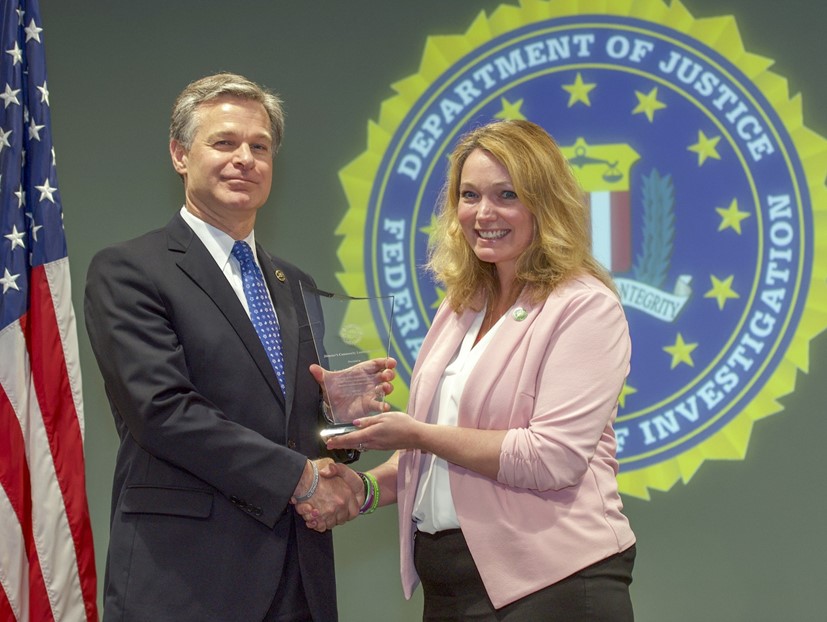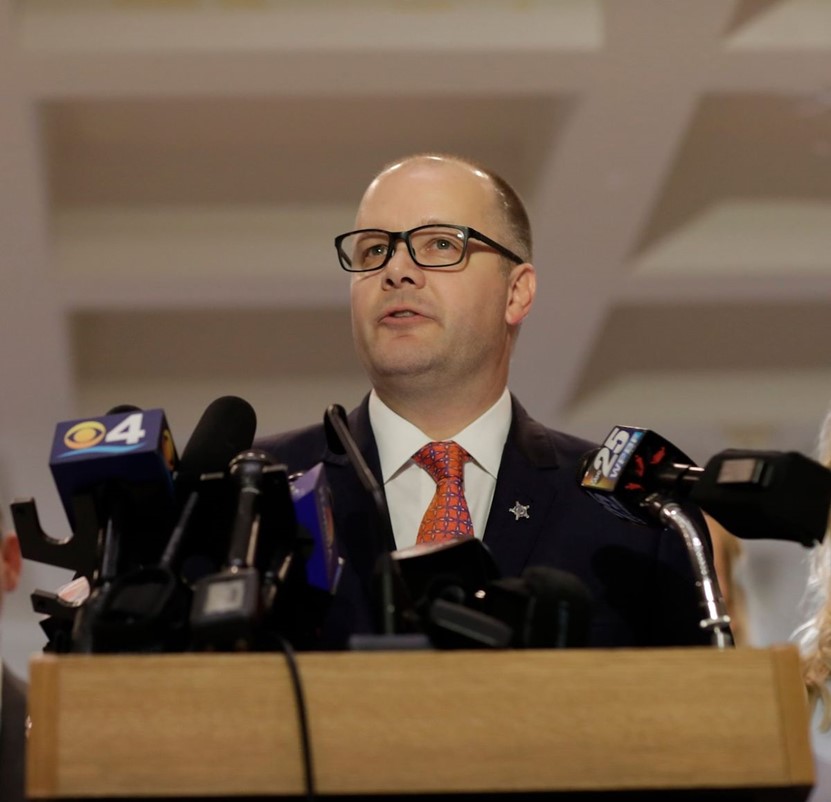
By Lee Williams
SAF Investigative Journalism Project
On December 14, 2012, a 20-year-old madman stalked the halls of the Sandy Hook Elementary School in Newtown, Connecticut, killing 20 young children and six adults.
Just 14 days later, the nonprofit Sandy Hook Promise was founded by three Newtown residents, Mark Barden, Nicole Hockley and Tim Makris.
Barden’s son, Daniel was killed during the mass murder, as was Hockley’s son, Dylan. Makris’ child was at the school but was not physically injured. Barden and Hockley became the group’s first co-CEOs. Makris became executive director.
The nonprofit quickly came to the attention of Connecticut’s Attorney General, who is responsible for safeguarding consumers from possible fraud or scams.
On May 16, 2013, Assistant Attorney General Karen Gano sent a strong letter to Sandy Hook Promise, demanding information about the nonprofit’s mission and priorities, its organizational structure and leadership, whether the group was political in nature, and “Where do you stand with regards to laws regarding gun purchase and gun ownership?”
In his response, the group’s operations director, James S. Belden, explained that the nonprofit consisted of two distinct entities: The Sandy Hook Promise Foundation, a tax-exempt 501(c)(3) and the Sandy Hook Action Fund, a 501(c)(4).
“While both the Foundation and the Action Fund have a similar core mission – to heal communities impacted by gun violence and, ultimately, to eliminate gun violence by addressing its root causes – they work to achieve that mission in very different ways,” Belden wrote. “The Foundation provides research and public education regarding the causes, and prevention, of gun violence and helps impacted families and communities health through financial and other aid, while the Action Fund works to promote the end of gun violence through public education and advocacy.”
Around the same time, co-founder Barden told an interviewer, “You will never see Sandy Hook Promise advocating for anything that even compromises or at all infringes on anybody’s right to have their gun, ever.”
Thus, the nonprofit’s position on the Second Amendment was muddled from the start, by design, which became SOP for the group. While the goal of other gun-control organizations is clear – total civilian disarmament – Sandy Hook Promise tends to skirt the issue, at least publicly, while raking in millions of dollars as a result of their nebulousness and doublespeak. However, a careful analysis of Sandy Hook Promise’s actions, programs and plans shows they’re just as rabid about disarming law-abiding Americans as any other member of the gun-ban industry. The difference is that the nonprofit confuses the issue – intentionally – and reaps great financial rewards.
‘Tragedy to transformation’
What is the Sandy Hook Promise and what does it do? Not even its own website offers any real clarity about the group’s true mission or intent:
“Sandy Hook Promise is a national nonprofit organization founded and led by several family members whose loved ones were killed at Sandy Hook Elementary School on December 14, 2012. Based in Newtown, Connecticut, our intent is to honor all victims of gun violence by turning our tragedy into a moment of transformation. By empowering youth to “know the signs” and uniting all people who value the protection of children, we can take meaningful actions in schools, homes, and communities to prevent gun violence and stop the tragic loss of life,” the website states.
The nonprofit makes bold claims about its successes, but offers no evidence or proof.
- 21 Million Participants Nationwide
- 185,000+ Tips Anonymously Reported
- 518 Confirmed Lives Saved With Crisis Interventions
- 191 Acts Of Violence With A Weapon Prevented
- 15 Planned School Shootings Prevented
- Passed STOP School Violence Act 2018
The Foundation’s website touts several programs, including “Say something,” which teaches the warning signs of at-risk youths. Its “Start with Hello” program encourages kids to reach out to their peers, and “Know the signs” teaches how to “identify, intervene and get help” for children who may harm themselves or others.
But users need to find their way to the Action Fund’s page to learn the specifics of the nonprofit’s gun-control agenda. The organization supports mandatory background checks on gun sales, extreme risk protection orders known as “Red Flags,” mandatory safe storage laws, and bans on “assault weapon,” homemade firearms they call “ghost guns,” and standard-capacity magazines.
Suspicious compensation
Unlike many other nonprofits, which create separate leadership and boards for their 501(c)(3) and their 501(c)(4), Sandy Hook Promise uses the same senior leaders and board of directors to oversee each entity.
Sandy Hook Promise’s leadership is paid by both the Foundation and the Action Fund. The salaries they receive – especially Makris’ – raise questions and concerns.
According to the nonprofit’s 2019 IRS Form 990, Makris received a total compensation package of $264,459. Just one year later, according to the nonprofit’s 2020 IRS Form 990, Makris received more than $582,666 – his compensation more than doubled. The Form 990 states that Makris was paid through February 28, 2020, at which point he resigned.
According to The Newtown Bee, Makris left to spend more time with family.
“It’s all good,” Makris told the newspaper. “I had actually been thinking about this since last August. It really just comes down to spending more time with family, and on myself.
But just two months later, Makris was named CEO of STOPit Solutions, which described itself as “the nation’s leading anonymous reporting system that teaches how to identify and get help for individuals displaying violent, unsafe, or harmful behaviors.”
According to the Sandy Hook Promise’s 2022 IRS Form 990, the most recent available, Hockley received $252,233 in compensation and Barden received more than $230,663.
According to Salary.com, the median salary for a nonprofit CEO in the United States is $186,909.
Sandy Hook Promise’s two entities – the Foundation and the Action Fund – also share a social media suite and a website. Both point prospective donors to one another.
Together, they have combined revenues in excess of $32 million. Nationally, only Everytown, Giffords and Brady raise more money.
Pushing propaganda
One way to determine whether Sandy Hook Promise is just another run-of-the-mill gun-control organization or, as it claims, a nonprofit dedicated to “honor all victims of gun violence” is by analyzing the information it shares with its members and the public.
At this, the nonprofit falls completely flat.
Sandy Hook Promise has cited the long-debunked Gun Violence Archive as a source in more than 50 press releases.
The most recent was titled: “What You Can Do Right Now To End Gun Violence.”
“According to the Gun Violence Archive, 2023 is likely to be the deadliest year of gun violence on record. Now, when faced with facts like the U.S. is now averaging more than one mass shooting a day, we wonder where to find the hope, and if and how to continue the fight. The discouragement is palpable,” the press release states.
The Gun Violence Archive is a blatantly anti-gun nonprofit we debunked years ago for their fake news and faulty data.
Founded in 2013, the GVA has become the legacy media’s source of choice for mass shooting data because they hype the numbers. The GVA came up with its own broad definition of a mass shooting. Anytime four or more people are killed or even slightly wounded with a firearm, the GVA labels it a mass shooting, and politicians, gun control advocates and the legacy media treat their reports as if they’re pure gold. For example, according to the GVA there were 417 mass shootings in 2019. The FBI says there were 30, because it uses a much narrower and more realistic definition.
That Sandy Hook Promise has cited GVA data more than 50 times proves they are more interested in pushing anti-gun propaganda than providing facts.
Increased lobbying
Last year, only Everytown for Gun Safety spent more on lobbying Congress than Sandy Hook Promise, according to OpenSecrets.org.
Sandy Hook Promise spent a total of $470,000. Its Foundation paid $150,000 and its Action Fund spent $320,000.
In 2021, the nonprofit paid more than $455,000 in lobbying fees, which was a dramatic increase from 2020, when the nonprofit spent only $90,000 on lobbyists.
Last year, the Foundation paid Center Road Solutions $150,000 to lobby Congress. The Action Fund lobbied on its own.
That data does not include money spent in state houses.
Diversity by the numbers
According to Zippia, which uses a database of more than 30 million profiles as well as Census data and other government information to create workplace estimates, most of the employees at Sandy Hook Promise are white woman.
The website found:
- Sandy Hook Promise has 104 employees.
- 52% of Sandy Hook Promise employees are women, while 48% are men.
- The most common ethnicity at Sandy Hook Promise is White (69%).
- 13% of Sandy Hook Promise employees are Hispanic or Latino.
- 11% of Sandy Hook Promise employees are Black or African American.
- The average employee at Sandy Hook Promise makes $44,605 per year.
- Employees at Sandy Hook Promise stay with the company for 2.5 years on average.
Powerful friends
At a gala commemorating the 10–year anniversary of the Sandy Hook mass murders, which was held at the Ziegfeld Ballroom in New York City, President Barack Obama said December 14th, 2012 was “the single darkest day of my presidency.”
“The news from Sandy Hook Elementary was devastating. It was visceral, and like so many other people, I felt not just sorrow, but I felt anger, fury at a world that could allow such a thing to happen,” Obama said.
Obama thanked Hockley and Barden, whom he described as friends. Their nonprofit, Obama said, has taught children “how to empathize with one another, how to create inclusive communities.”
“And by helping prevent the kind of social isolation that can lead to violence, Sandy Hook Promise is not just making school safer today, you’re creating better people, better citizens now and for generations to come. And that’s a remarkable achievement,” Obama said.
The former president in not alone in his praise.

At a ceremony in 2019, FBI Director Christopher Wray presented Hockley with the Director’s Community Leadership Award. The nonprofit was chosen by the FBI’s local field office, which stated: “Sandy Hook Promise is committed to a culture dedicated to identifying, intervening with, and getting help for those who may be at risk of hurting themselves or others.”
Expert analysis
Ryan Petty is a school-safety activist whose 14-year-old daughter, Alaina, was murdered on February 14, 2018 in the Marjory Stoneman Douglas High School mass shooting in Parkland, Florida.
Petty has met the Sandy Hook Promise leadership and he understands what they are going through.
“They tried to focus on solving targeted attacks on schools by creating programs that many school districts adopted. They seemed to be taking a middle-of-the-road path, but somewhere along the way they lost their way and became almost entirely about gun control,” Petty told the Second Amendment Foundation’s Investigative Journalism Project Tuesday. “Trying to put funding together for a purely school-safety focused entity is a challenge. It’s hard to raise money for school safety because the solutions are so varied and complex. They’re really hard to explain to a potential donor. On the other hand, it’s easy to raise money for gun control because you make the gun the problem. So many people are convinced that the gun is the problem they’ll open their wallets and checkbooks and are willing to fund anything that restricts the rights of Americans to possess firearms. Ultimately, they believe that it is the solution – if you disarm Americans violence will go away. Nothing can be further from the truth. History has taught us that.”
After his daughter was murdered, Petty said Everytown and Giffords offered him all-expense-paid trips to marches, protests and other events.
“They were all over me until they understood I was pro-Second Amendment, despite what happened to my daughter, which was a failure of law enforcement and a school district to react. It was also about a family in denial about the threat their child posed to the community. It was not a gun-control issue.”

Aimee Thunberg, Sandy Hook Promise’s media contact, did not return multiple calls or emails seeking comment for this story.
The Second Amendment Foundation’s Investigative Journalism Project wouldn’t be possible without you. Click here to make a tax-deductible donation to support pro-gun stories like this.



